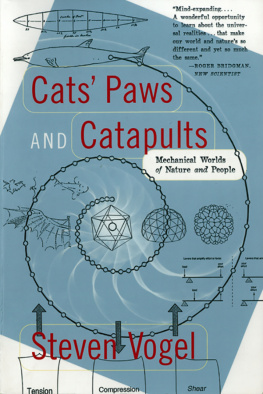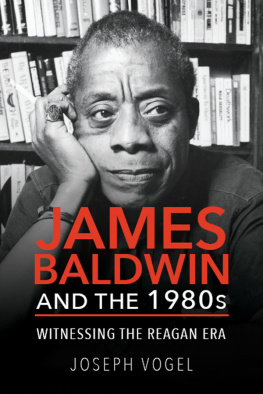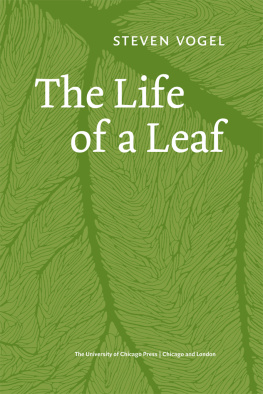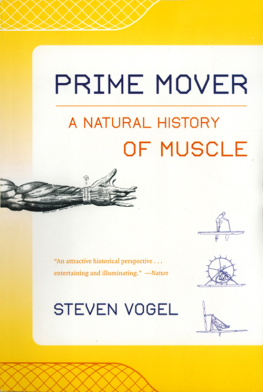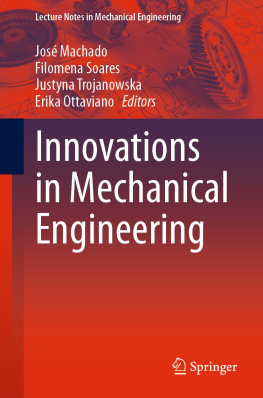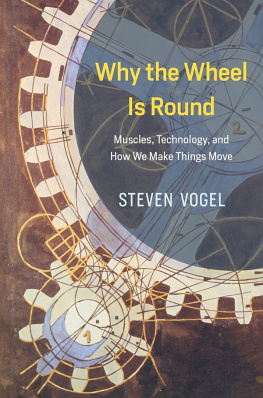
More praise for Cats Paws and Catapults
[Steven Vogel] writes with unusual recognition of the needs of the inexpert reader.
Philip Morrison, Scientific American
Unceasingly, [Vogel] advocates the fun of science.
Peter Gorner, Chicago Tribune
If [DArcy] Thompsons work defined the classical period in the science of form, the field has just entered its renaissance. One of the leaders of the resurgence is the zoologist Steven Vogel.
Tyler Volk, The Sciences
[F]ew scientific books show; most scientific books tell, recite strange names, and wallow in complexity. But over the years I have come to expect that Steven Vogel will always show me science.... Any of [Vogels] books could entertain an expert or an amateur.
Mike May, American Scientist
Who is the better technologist, Mother Nature-source of seashells, spider webs, and birds wingsor the human engineercreator of skyscrapers, nylon, and airplanes? This engrossing question lies at the heart of a fine new book by Steven Vogel, an expert in biomechanics with a flair for genial philosophizing.
Samuel Florman, author of The Civilized Engineer and The Existential Pleasures of Engineering
Full of ideas and well-explained principles that will bring new understanding of everyday things to both scientists and non-scientists alike.
R. MCNEILL ALEXANDER, NATURE
This elegant comparison of human and biological technology will forever change the way you look at each.
MICHAEL LABARBERA, AMERICAN SCIENTIST
Perfect for the lay reader.... It is Vogel's particular genius to illustrate the principles of structural forces.
M. R. MONTGOMERY, NEW YORE TIMES BOOK REVIEW
C ATS PAWS
and
CATAPULTS
Mechanical Worlds of
Nature and People
STEVEN VOGEL
Illustrated by Kathryn K. Davis
with the author

W. W. NORTON & COMPANY
New York London
Copyright 1998 by Steven Vogel
All rights reserved
First published as a Norton paperback 2000
For information about permission to reproduce selections from this book, write to
Permissions, W. W. Norton & Company, Inc., 500 Fifth Avenue, New York, NY 10110.
The text and display of this book were composed in Adobe Garamond
Desktop composition by Tom Ernst
Book design by BTD/Mary A. Wirth
The Library of Congress has cataloged the printed edition as follows:
Vogel, Steven, 1940
Cats paws and catapults : mechanical worlds of nature and people
/ by Steven Vogel ; illustrated by Kathryn K. Davis,
p. cm.
Includes bibliographical references and index.
ISBN 0-393-04641-9
1. Biomechanics. 2. Mechanics. I. Title.
QH513.V64 1998
571.43-dc21 97-44807
CIP
ISBN 0-393-31990-3 pbk.
ISBN 978-0-393-35295-5 (e-book)
W. W. Norton & Company, Inc., 500 Fifth Avenue, New York, N.Y. 10110
www.wwnorton.com
W. W. Norton & Company Ltd., Castle House, 75/76 Wells Street, London W1T 3QT
For Jane
L ife is what biologys about. Technology is something else altogether. Or so I believed before I got into a kind of biology thats about technology as well as life. More to the point, itbiomechanicslooks at the technology of life, at the mechanical world of nature. Sometimes that world resembles the mechanical world that we humans have created. But sometimes the two differ strikingly. This book compares those technologies. Its about the ordinary things and creatures around us; it intends, immodestly, to change the way you look at your surroundingsat least a little. It has some other missions as well.
Ive come to realize that engineers are as curious about our world as we are about theirs. Some suspect that a look at organisms might help them create designs and fabricate devices. How could a biologist disagree? But shifting from one world to the other isnt a trivial matter, and the traveler needs a road map and a guidebook. This book tries to provide them by introducing biomechanics in a point-by-point comparison with the more familiar world of our own technology.
At the same time I want to inject an element of sobriety into our romantic view of living things. The elegance of natural design seduced a lot of us into becoming biologists. Nature does what she does very well indeed. Butand heres the rubwhy should she do so in the best possible way? And why should she provide a model for what we want to do? I want to ruffle our tendency to view nature as the gold standard for design and as a great source of technological breakthroughs.
Beyond that, I want to argue that natural design provides no honest foil for skewering human technology. In getting together the material for this book, Ive repeatedly bumped into an antitechnological literaturenature-worshiping, engineer-bashing tracts. Its authors take a thoroughly unrealistic view of our contemporary situation and prospects and lay blame inappropriately; hanging the social consequences of technology on engineers amounts to hanging airport congestion on the Wright brothers.
About this last mission I cheerfully admit personal bias. I have no formal background in engineering and only a primitive knowledge of the underlying physics and mathematics. I couldnt have done what science and writing Ive done without the unfailing generosity and support of engineers. For nearly forty years, and at several institutions, theyve explained things, steered me out of cul-de-sacs, pulled my foot out of my mouth before I published nonsense, and suggested accessible source material; in short, theyve done everything imaginable to welcome me to their domain.
Doing this book has treated me to an intellectual feast. I indulged my fondness for building things by making a version of an ancient Egyptian drill, and I had a pretext to lay hands on (and read) the first book printed on paper derived from wood pulp. I had an excuse to use nine libraries on the Duke campus (and several elsewhere), not to mention interlibrary loans, CD-ROMs, government documents, various on-line databases, old newspapers on microfiche, and network news groups.
I remain daunted by the clear relevance and separate sophistication of anthropology, archaeology, paleontology, economics, architecture, geometry, geography, law, and the histories of science, technology, exploration, domestication, and culture. All the complex interconnections bring to mind the biomechanical problems of keeping your finger in the air while your ears to the ground and of keeping your feet on the ground while your heads in the clouds.
Ive drawn quite shamelessly on professional colleagues and other friends. In no other project have I received such a treasure of useful suggestions, ideas, and examples. Im especially indebted to Matthew Healy, Michael LaBarbera, Catherine Loudon, Jane Vogel, and Stephen Wainwright, each of whom read the entire manuscript in first draft and made copious but always kind and tactful suggestions. In addition, useful ideas emerged from conversations with David Alexander, Michael Blum, Richard Burian, Steven Churchill, Ruth Day, Martha Dunham, Betsey Dyer, Shelley Etnier, Robert Full, Margaret Hivnor, Diane Kelly, Peter Klopfer, Daniel Lieberman, Dan Livingstone, Anne Moore, M. Patricia Morse, Bruce Nicklas, Francis Newton, Fred Nijhout, George Pearsall, Charles Pell, Henry Petroski, Jeffrey Podos, Michael Reedy, Knut Schmidt-Nielsen, Kalman Schulgasser, John Sharpe, Robert Teer, Edward Tenner, Lloyd Trefethen, John Wourms, and many other people of whom I lack a proper list. Im grateful to a host of helpful librarians, especially Richard Hines and David Talbert.
Next page
